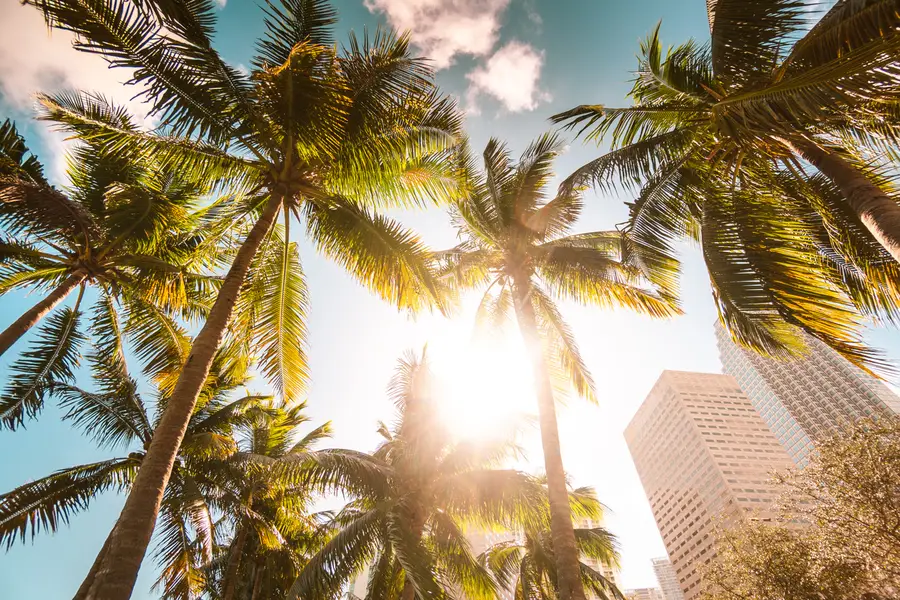Why more trees are important for saving lives
Heat-related mortality is one of the leading causes of weather-related deaths in the United States. As temperatures continue to rise and municipalities continue to expand, heat-related mortality is projected to increase by thousands in the United States. The Build Back Better Act, which passed in August 2022, includes about $3 billion devoted to increasing tree coverage, especially in city neighborhoods where more than 30% of the population is living below the poverty line. Those living below the poverty line tend to be impacted more by extreme heat. Increasing tree coverage can help communities by reducing heat-related deaths (NEW YORK TIMES).
How will increasing tree coverage help reduce heat-related mortality?
In collaboration with the U.S. Department of Agriculture (USDA) Forest Service, the State University of New York (SUNY), and Davey-Tree, RTI International developed a new method for modeling the impacts of tree cover on air temperatures and heat-related mortality and applied it to selected cities across the United States. This project provides the foundation for expanding the suite of benefits in i-Tree to include a temperature module. The suite of i-Tree tools delivers peer-reviewed tree benefits estimation science from the USDA Forest Service to users with access to free tools. These decision support tools can be used to quantify and value the beneficial impacts of tree cover.
Following a four-step process, we (1) quantify tree and impervious cover at the census block group level, (2) model the effect of changes in urban tree cover on air temperatures across the United States using i-Tree Cool Air (Yang et al., 2013), (3) apply health impact functions from epidemiological literature to relate changes in air temperature to human health, and (4) monetize changes in premature mortality using estimates from economic valuation literature.
We demonstrate this method by looking at Baltimore City, Maryland. We find that increasing tree cover by 10% reduces heat-related deaths by 83 to 247 people, and more than 50% of the reduced mortality is among people aged 65 or older. Reductions in air temperature due to increased tree cover were greatest in downtown Baltimore where tree cover is relatively low and impervious cover is relatively high. The highest mortality reduction was seen not directly in downtown Baltimore but instead in the outskirts where the majority of people aged 65 or older live.
To explore how effective trees might be in different locations, we also implemented a 10% increase in tree coverage scenario in 10 U.S. cities across different climatic regions and examined impacts throughout the season and on extremely hot days. Heat-related mortality decreased significantly, from approximately 50 fewer deaths in Salt Lake City to about 3,800 fewer deaths in New York City. This wide variation across cities is due to differences in demographics, land cover, and local conditions. Hot and dry cities benefit more in the summer season overall. For example, in Phoenix, mortality was reduced up to 22%. In cooler cities, such as Minneapolis, trees can reduce mortality significantly on extremely hot days and therefore help mitigate impacts during heat wave conditions.
How can city planners remain resilient and adapt to heat-related mortality?
The methods and results in i-Tree are intended to facilitate urban planning, scenario assessment and prioritization for urban forest management, and advocacy. Our project builds on i-Tree capabilities to support the design of targeted and efficient strategies that address changing weather patterns. Our findings highlight the importance of considering trees as an adaptive strategy for both hot and cool cities. Since studies project more than half the heat-related fatalities under climate scenarios to be in cooler cities, trees can provide substantial benefits in such locations. Our study also shows the importance of considering population density and where populations susceptible to extreme heat reside. Areas with a higher concentration of people aged 65 or older, for example, may benefit most from increased tree cover. The spatial and temporal distribution of impacts can also support different decision-making efforts, such as city planning (e.g., optimize tree plantings) and public health (e.g., provide cooling centers).


